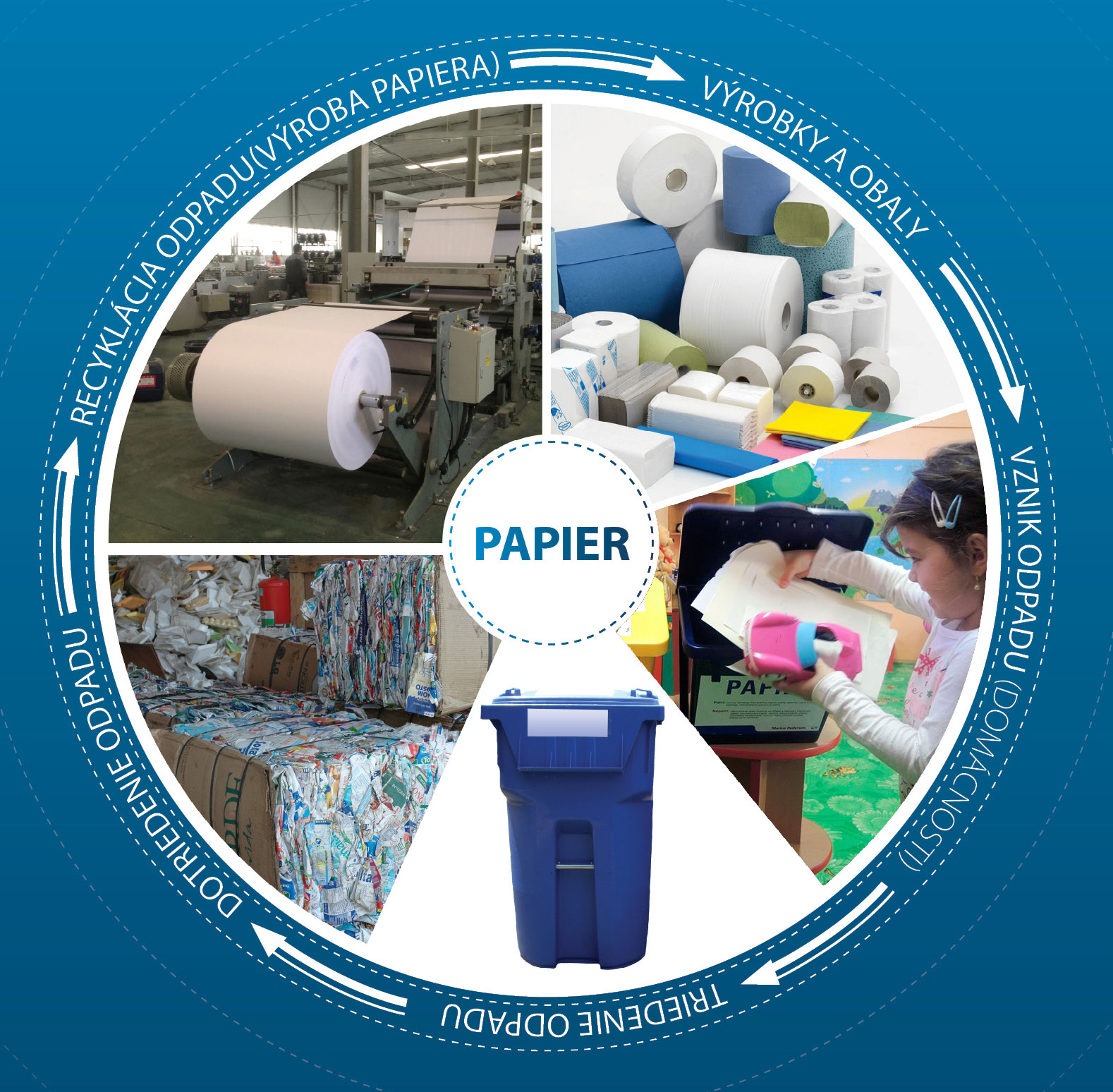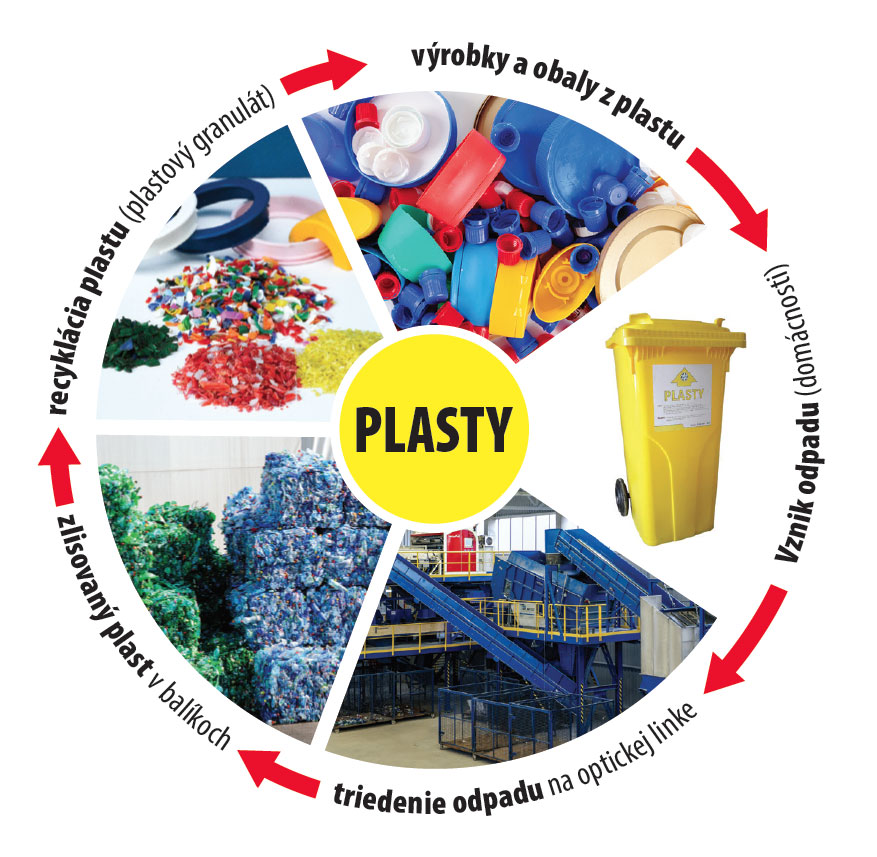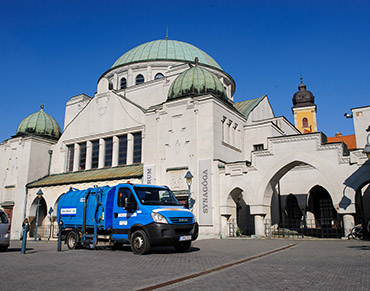The sorting of waste significantly reduces the amount of municipal waste landfilled, eliminates unauthorized landfills, reduces the costs of taking and dumping unsorted waste to landfills, saves natural resources and raw materials that can be further used, reduces the adverse effects of human exposure on the environment, thus contributing to a cleaner environment. Last but not least, waste sorting makes it possible to reuse waste through recycling. By sorting waste, we allow for the further processing of more than a third of the amount of waste produced.
In the event that all components of the sorted collection are removed from municipal waste, the “residual“ municipal waste, which is considered to be mixed municipal waste, remains and belongs to a black waste bin.
The following waste does not belong to the black waste bin: separately collected components of municipal waste (paper, plastics, glass, biodegradable waste from greenery maintenance), bulky waste (furniture, seats, doors, floors – belong to the waste collection center), hot ash, flammable, explosive waste, stones, soil, construction waste, dead animals and waste that would endanger the health of employees of the collection company by its composition.
Paper
By sorting paper, we save not only our forests, but also water resources and energy. We throw the paper in the blue waste bin. This includes newspapers, magazines, office paper, notebooks, books, leaflets, cardboard, paperboard and paper packaging (e.g. paper bags). The composition of all these types of paper varies and therefore the sorting line is further sorted into different types. The sorted paper is then pressed into packages and weighed into the recycling facility, which is the paper mill. Classified paper is also used to produce newsprint, notebooks, cardboard boxes, toilet paper, egg packs and the like. You will find it interesting to know that paper can be recycled up to seven times!
Life cycle of the sorted paper
Glass
The production of recycled glass is also less demanding on energy consumption. In addition, sorted glass partially replaces non-renewable raw materials used in the production of glass (glass sand, limestone, dolomite). Glass can be recycled endlessly.
Plastic
Plastics are a huge burden on the environment. They contain heavy metals which enter the air during combustion together with carbon monoxide and other hazardous substances. In addition, plastics are produced from oil, which is a non-renewable natural resource.
Prior to recycling, plastics should be sorted by type.
We throw plastics in a yellow waste bin or yellow bags. These include plastic bags, compressed PET bottles, yogurt crucibles, old plastic toys, plastic packaging made of various detergents, shampoos, creams, foam polystyrene, foil and many other unnecessary plastic products that our households dispose of. Sorted plastics need to be further sorted into different types – in particular foil, PET bottles, polystyrene, drugstore packaging, etc., or waste that does not belong there should be removed from plastics. And that’s what happens on sorting lines. The picture shows a special optical line, which is currently the only one of this kind in Slovakia and belongs to the top technology. It is located in the waste collection center at the Marius Pedersen plant in Šulekov. All plastics from the sorted collection of municipal waste of individual towns and municipalities will pass through the line. The optical unit can distinguish between different commodities based on the type of plastic and color. The waste entering the sorting plant is thrown by a loader into the input hopper, from where it is transferred by a conveyor to a cabin sorter for manual sorting of oversized items. Here the waste is being prepared to enter the optical line. Subsequently, the waste is transported by a conveyor under a magnetic separator, whose task is to separate metal parts and continues to the ballistic separator, which separates three fractions from the material – off-size waste, flat raw materials such as foils and PET bottles and drugstore packaging. From there, the material is moved by the conveyor to a fully automated optical unit. In the next step, the optical unit itself will distinguish between the type and color of plastic waste on the basis of infrared radiation.
The sorted plastic is then pressed into packages and weighed into the recycling facility. In addition, sorted PET bottles are used as fillers for winter windbreakers, sleeping bags, or for the production of clothing (e.g. fleece jackets), carpets, shopping bags. It is possible to make foil or various bags from foil again, e.g. for waste. Foam polystyrene can be reused for the production of new polystyrene packaging or insulation boards. Other plastics are used to being processed in such a way that granules are formed and recycling companies can then re-produce new plastic objects (garden furniture, paving, etc.). The important thing is that the waste plastic is not contaminated with chemicals, food residues, oils. Linoleum, cellophane, new tubes also do not belong in plastics. These should be handed over at the nearest waste collection center.
CAUTION: for PET bottles, we should not tighten the caps completely, because closed bottles cannot be pressed into packages.
Life cycle of sorted plastics
Hazardous waste
Substances containing hazardous waste (lead, mercury, solvents, paints, acids, etc.) can enter groundwater in a normal landfill and thus enter the food chain and seriously harm human health. Therefore, this waste should be delivered in waste collection centers.









